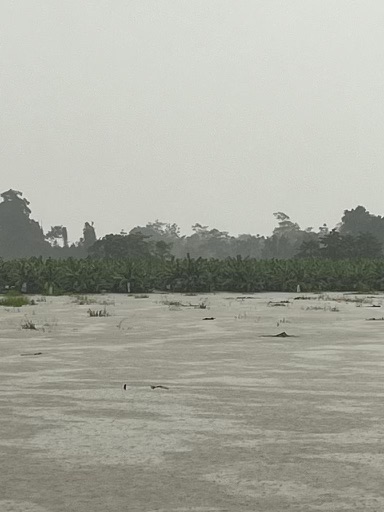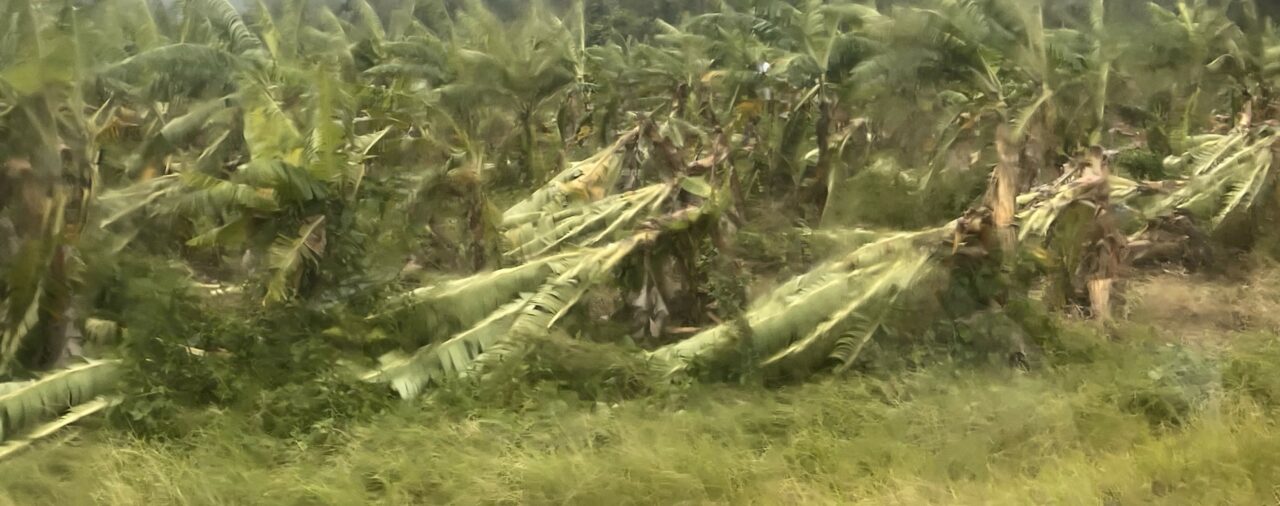In the Far North of the Sunshine State, blue sky has become a rarity.
Since December, Australia’s banana growing heartland has been battered by rain, floods and extreme wind. It‘s the wet season and then some. Tropical Cyclone Jasper caused widespread, but varied, damage late last year. Growers within the same catchment reported everything from minimal to substantial damage, with some businesses noting it would be up to a year before they were back at full production.
In January, Tropical Cyclone Kirrily crossed the coast further south, at Townsville, but saw destructive winds reach farms in the Kennedy Valley. Since then, multiple weather systems have continued to raise rivers, inundate paddocks and dull the colour of the industry’s normally vibrant fruit.
The Australian Banana Growers’ Council, and the Hort Innovation marketing team, have worked closely together to ensure that consumers know that the much-loved produce is just as tasty and nutritious on the inside.
Farming is not for the faint-hearted but, as always, growers continue to ensure Australian families have access to top-quality bananas.
Here, Skye Orsmond speaks to some of the growers who have been hard hit by weather events in the last few months.
KENNEDY VALLEY BANANAS
Second-generation banana farmer Brett Oberthur described the impact of TC Kirrily as “another blow.”
The pristine Kennedy Valley that hugs the Kirrama Range south of Tully was impacted by winds of up to 120km/hr on 25 January this year when the category 3 system made landfall north of Townsville at about 10pm.
Brett said the intense winds caused havoc on his185 acre property, which experienced crop loss on about 125 acres.
“I’ve gone from sending about 60-66 pallets a week to around 14-15 pallets a week.”
“I’m currently picking off around 60 acres. The wind took out anything a bit over half grown.”
It‘s a challenging time for Brett, who has been working on the farm since he was 14.
“I was on the comeback trail. This is a blow I didn’t need.”
DICKO’S BANANAS COP A BATTERING
The winds caused by TC Kirrily toppled a large proportion of Jeff Dickinson’s 45-acre farm
in the Kennedy Valley.
But he remains optimistic, with a positive attitude and the need to “keep going” in the face of
adversity.
Jeff lost 40-50% of his bunched plants and 20% of his unbunched plants in the severe winds that “barreled down the hill.”
He can recall his parents saying that if a cyclone was expected to make landfall between Rollingstone and Ayr, to be prepared to be hit by wind in the Kennedy Valley. And they weren’t wrong.
“It was pretty gut wrenching at the time as the crop would have been ready to cut leading into Easter, when the prices are generally good.”
“We’re now sending around 3 – 7 pallets a week, when we should have been sending around 20 – 25 pallets a week.”
His eagerness to produce high quality fruit packed with flavour is unwavering and will always remain his highest priority when growing bananas.
“Growing quality fruit with a great taste is a win-win for me, and for our buyers.”
He also has the next generation in mind, with two sons in their early twenties eager to come back to the farm. “You’ve just got to keep going. Put one foot in front of the other and try and do the best you can under the circumstances.”
TIPS AND LINKS
- If affected by extreme weather, growers can visit www.abgc. org.au to find out about disaster funding and other available resources
- You can also head straight to the QRIDA website: www.qrida.qld.gov.au
- If you experience damage, take photos and keep records of any work or repairs undertaken
- Useful information can also be found at www.betterbananas.com.au and www.panamatr4protect.com.au
Biosecurity
After flooding in the banana growing regions of FNQ, the potential for Panama TR4 to spread through soil and water is a subsequent risk, making on-farm biosecurity of paramount importance.
Early detection through regular surveillance is critical to controlling and containing the disease. It‘s essential that people and machinery come clean and leave clean, to reduce the risk of spreading contaminated
soil and water.

ACROSS THE COUNTRY
Western Australia
Carnarvon growers sweltered through a record-breaking heatwave in February, with the Western Australian growing region claiming the title of hottest place in the world – for a day at least.
On February 18, the temperature gauge hit 49.9 degrees and, while it was thankfully short-lived, needless to say both farmers and their fruit were not fans of the extreme heat.
While the peak was only for one day, growers copped temperatures in the 40s for longer. Business Manager of Sweeter Banana Coopertive, Doriana Mangili said the impacts ranged from immediate burning through to reduced production for at least nine months.
“It really depends on the farm location – those closer to the ocean, and therefore the
seabreeze, weren’t as badly affected.”
Ms Mangili, who is also an ABGC Director, said it serves as a reminder that these extreme events are something all those involved in the banana industry will need to be better prepared for in the future.
New South Wales
NSW Director Stephen Spear, who farms on the Mid North Coast, said it’s hit and miss in growing regions there, and unfortunately the
latter at his own farm.
“It’s a green drought at the moment. It looks good, but there’s not been enough rain to saturate the ground.
“For the first time since 1974, the gullies on this property haven’t flowed above ground over summer.”
Some places around Coffs Harbour, and into the Northern Rivers, have received enough rain. As always, it sometimes feels as though it
depends which cloud you’re under.
“Here, I wouldn’t have thought we’d be up for a bushfire so soon after 2019. But if we don’t get rain from now on, it won’t be looking good.”

